Squatting, The Pink Palace and Hot Beeswax | Artist poet Shane Kneipp
My first abode in Brisbane in 1977 was a squat in Milton which I shared with my brothers Tony and Terry as well as other folks. I can’t remember the exact number, but the house was in Douglas Street. The street today is mainly commercial and light industrial, but in those days it was just plain decrepit. Like most of the inner city suburbs Milton was a decade or more away from gentrification and yuppification. I don’t know that the house we were in was flooded, but parts of the street had gone under in the big flood of 1974. The parts of Milton near the river were definitely badly affected by the flood. In the aftermath of the disaster I went with members of my Boy Scout troop from Redcliffe to assist with the clean-up. We helped with the clean-up of an old woman’s house.
Practically all her life was gone, enveloped in fine black silt. It was very sad.
The house we were squatting in was an old decrepit high-set Queenslander. The front steps had totally rotted away. As I recall, there was no key for the back door. Entry was gained by opening a hinged set of paling under the house and then climbing up a ladder through a hole in the lounge room floor. The toilet and shower were under the house, the shower being merely a shower-head set in the ceiling with no partitioning whatsoever.
The kitchen was your classic old blowsy kitchen with an Early Kooka stove. (We had gas and electricity.) We were all pretty piss-poor and I recall we mostly ate brown rice and vegetables. I remember the turpentine mango tree in the yard having a bumper crop and we ate a shitload of mango curries. A roast chicken was a major luxury.
Most of the people in the house were hard-core anarchists and it was there that I started developing a political awareness. There were plenty of radical books and pamphlets about as well as back issues of papers such as the National Times and Nation Review. There were also copies of the Australasian Weed, a pioneering marijuana legalisation publication. The times being what they were the Australasian Weed was soon banned, so they changed the name to the Australasian Seed. This was also banned so the next issue was the Australasian Need. They kept up this name-changing strategy for several issues as each publication was banned. Australia really was tight-arse in them there days.
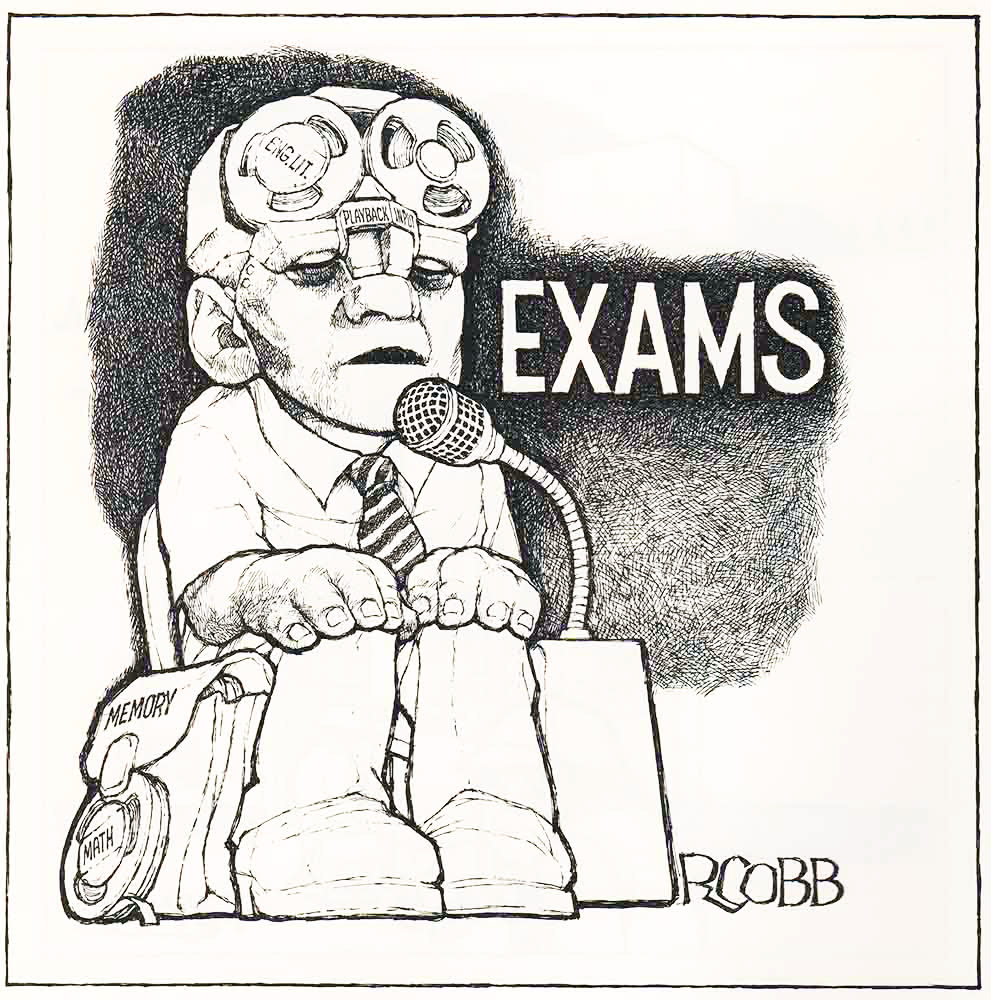
Acknowledging the amazing work by artist Ron Cobb
At the time my brother Tony was running a printing business in Margaret Street in the city with a partner, Charlie. They did jobbing printing for businesses but as well they also printed various anarchist leaflets and posters. One poster I remember was about A1 size and was a diatribe about the educational system being a monolithic uncaring entity designed to feed useless facts into a student’s numbed brain for the purposes of mindless regurgitation. (So, nothing much has changed there.) The graphic they used was a great Ron Cobb cartoon showing a student’s head as a tape machine. One of these posters was stuck up on a building at Queensland Uni, they must have used a seriously good glue, it was still there a good two decades later.
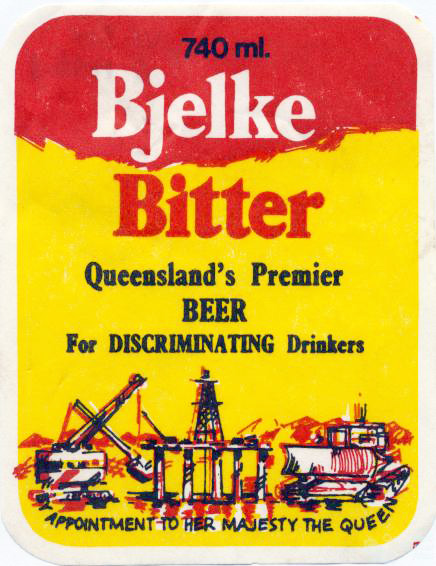
Bjelke Bitter
Another classic Tony and Charlie produced was a parody beer bottle label. In the late 70’s in an attempt to challenge the popularity of Carlton’s Victoria Bitter, Castlemaine Brewery brought out a beer called Brisbane Bitter. It was a seriously fucking awful beer, people called it Brisbane River, it was the sort of beer that you drank with the utmost reluctance after a party had run out of absolutely every other booze. The label the guys did was for “Bjelke Bitter – The Premier Beer For Discriminating Drinkers”. The Brisbane Bitter label had a graphic of the Storey Bridge, on the Bjelke Bitter label this was replaced with mining and drilling equipment.
Someone I met about this time was Stefan Zabrowski. Stefan was a long, thin, raving ratbag streak of Californian anarchist, passionate about fighting the righteous fight. The Brisbane police loathed him and were always hauling him in at rallies and punk gigs, beating the shit out of him and doing stuff like hanging him out of an upper floor window of the Brisbane watch house. Some of the stuff he did re-defined chutzpah. On one occasion a cop came to Stefan’s front door one evening. The cop wasn’t even after Stefan, he was looking for a former resident over an old traffic offence. The moment Stefan opened the door and saw a policeman there he instantly handed the cop his bag of grass, saying, “Here you go officer!” When the case came to court and the arresting officer gave his testimony, “The defendant opened his front door and immediately handed me his bag of marijuana”, the magistrate point-blank refused to believe him and rather testily requested that the police refrain from coming into his court with fairy tales. No wonder the police hated Stefan’s guts.
There was a house a few blocks away occupied by friends of Tony’s and we often hung out there. It was an all gay household, mostly aspiring actors, and I spent many pleasant afternoons there smoking pot and listening to Nina Simone and Phoebe Snow. They were lovely guys and they certainly helped me overcome the latent homophobia that is (still, sadly) inculcated in young Australian males.
Surprisingly, given the times and given that the house was full of raving lefties, I don’t recall that the cops ever came around. In fact it was one one of the few places I ever lived in that wasn’t raided.
We were never hassled about squatting, I think the owner was some absentee investor type just waiting to make an eventual buck, as I’m sure he did.
If I was asked to compare the place to anything I think it would be the classic comedy series, The Young Ones. It was a series that really reverberated with my generation, we’d all been there. I moved out after a few months. I got into art college and my Ausstudy grant improved my financial situation immeasurably. As an introduction to urban living, it was hard to beat.
As I recall the house burned down not long after when one of the guys still living there got pilled out and crashed, leaving a candle burning. No one was injured, although several classic guitars were lost.
Memory & The Pink Palace

Tim O’Shea, The Pink Palace,1989 Photo: Racheal Bruhn
Guildfort Court, better known as the Pink Palace, was built in brick and stucco in Spring Hill in 1923. The architect was S.W. Prior and the builder was J. Knight.
The Pink Palace, now sadly demolished, had a long proud place in the history of Brisbane ratbaggery. I believe Brisbane’s first heroin arrest occurred there in 1941. Spring Hill was jumping at the time. There were several brothels in the suburb that catered to wartime servicemen.
Prostitution was legal in Queensland until the late 1950’s. There was even a government doctor who gave the sex workers regular health checks. When she retired the girls had a whip-around and presented her with an engraved silver tea tray.
Pretty well every post-war counter-culture group had members living in the Pink Palace at one time or another, beatniks, hippies, punks, mods. I remember once taking a cab home there. When we pulled up the driver exclaimed, “Ah, the old Pink Palace! I used to live here back in the 50’s when it was all bodgies and widgies!” (Bodgies were 50’s rockers, widgies were their ‘sheilas’.)
I lived there between 1983 and 1987, mostly by myself. When I first moved in the population was largely but not exclusively lesbian. There were members of a feminist band named ‘Spit’ in the flat above me. I got to know their repertoire intimately. Their best known number was a song called ‘Spit on Christmas’, a concept I had no problems with at all.
The Pink Palace had twelve flats in all, in two three-storey blocks separated by a small courtyard. One of the peculiarities of the place was that, given that the wall between the neighbouring flat was brick and stucco, you could hear little or anything from your next-door neighbour, but given that all that was separating you from the flat upstairs was wood and plaster, you could hear practically everything.
I was in Flat 1 on the front bottom right-hand side. As I mentioned, the flat above me was originally occupied by members of Spit. Later residents included artist Racheal Bruhn and filmmaker Stephen Stockwell. The top flat on my side was occupied by a sex worker named Tuesday. Apparently her specialty was S&M, she certainly looked the part. Tuesday was a heroin user and her attitude towards her used fits was pretty cavalier, often she just chucked them out the window into the small, rather grim yard in front of my flat. One weekend morning Steve Stockwell was taking a stroll in the yard barefoot, when he suddenly discovered to his alarm that he had impaled one of his big toes on one of these fits. Needless to say, this caused Steven some anxiety.
Another thing Tuesday was in the habit of doing was to start a bath running and then go on the nod. The bath would then overflow and start flooding into the flat below and then subsequently into mine. I would then have to go up and pound on her door to get her to wake the fuck up and turn the taps off.
Albert Park was just across the road and from time to time the city council would hold free concerts there. They were mostly pretty ordinary if not downright rank, but I remember one performance by a Japanese drum troupe that was spectacular. One of the most remarkable and eerie sights I ever saw was there one night. Stephen Stockwell had kindly invited Daryl Graham and me up to his flat for an evening of nitrous oxide and watching Plan 9 From Outer Space.
When we came back downstairs we found that a classic Brisbane pea-souper fog had descended. Albert Park is a bowl that goes down into a hollow from the pavement. The fog had totally filled the park, so that Daryl and I stood on the sidewalk with the fog lapping at our feet. It was a sight straight out of Steven King and nothing would have induced us to enter those eldritch tentacles.
A lot of lefty marches would often end up at Albert Park and my flat being so handy, it inevitably ended up being the party flat. A good time was usually had by all and there were at least three times where (generally some time afterwards) I came across pot that people had accidentally left behind.
It was appreciated.
Spring Hill was the sort of inner city neighbourhood that had its fair share of ratbags and eccentrics. One who sticks in my mind is an Irishman who, most evenings around 10ish, would lurch past as tight as a tick, ranting an incoherent melange of words, the only one which could generally be made out was “fuck”. I don’t think I ever actually ever saw him, only heard him. One night Steve Stockwell came down with a video camera and attempted to film him. The alarmed Irishman took to his heels with Steve in hot pursuit.
Naturally the Palace was the sort of place that attracted folk of an arty bent and there were various artistic types that lived there during my time. My memories are imperfect I fear, I am old and have often misbehaved.
Racheal Bruhn was, as I have mentioned, my upstairs neighbour for some time. She was an extremely sweet person, quite shy. Racheal took a series of portraits of friends while living there, studies for a series of paintings she produced for a show in 1989 at Arch Lane Public Art.

Julian, The Pink Palace, 1989 Photo: Racheal Bruhn
A guy named Ken who lived diagonally across from me made jewelry, from things like beads and skewers, very personal and idiosyncratic, I recall fabulous pectorals with an Egyptian feel to them. Two women, (alas I forget their names) who lived on the floor above me, had a performance group called as I recall Drippy Taps, who were very popular at the time.
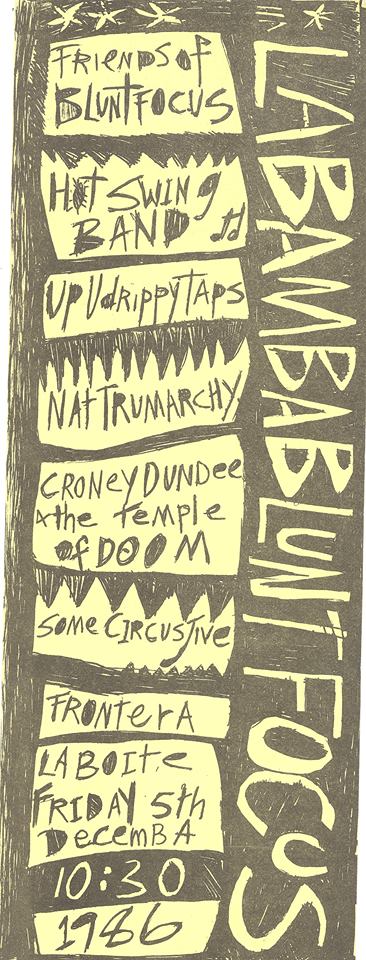
Upu, Drippy Taps, Performance, La Bamba
There were doubtless other arty types as well, but as I’ve said, I fear my memory bank is missing the odd gigabyte.
It was about this time that I started getting more involved with the then thriving artist-run space scene in Brisbane. I had already dipped my toe in the water with a joint show with Daryl Graham at One Flat in 1982, under the name of Dgraskne. I can’t remember exactly how I got drawn in, I guess it was mostly from hanging around until folks finally asked me to join in, doubtless out of pity.
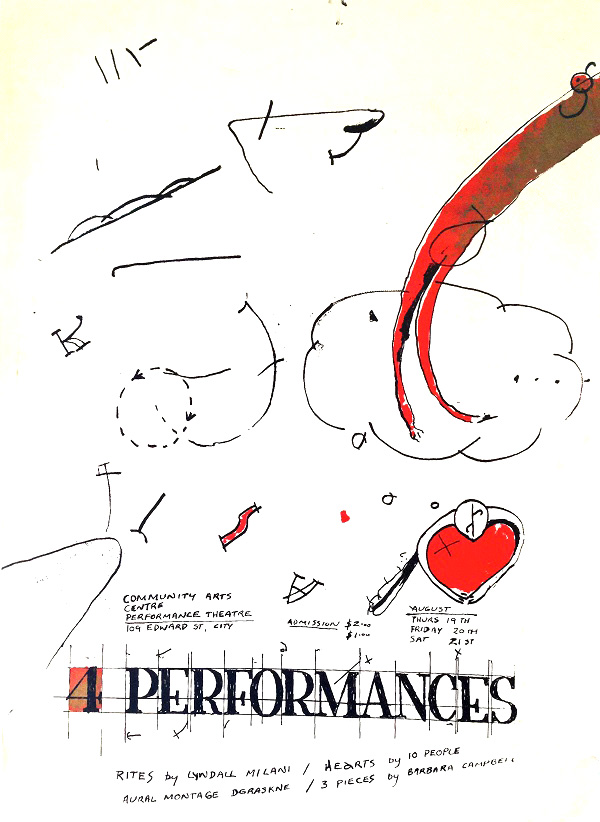
‘4 Performances’, at the Brisbane Community Arts Centre ( now Metro Arts) including ‘Rites’ by Lyndall Milani, ‘Hearts’ by 10 People, ‘Rural Montage’ by Dgraskne ( Shane Kneipp and Daryl Graham) and ‘3 Pieces’ by Barbara Campbell. Poster Design -and printed – by David Whyte
In 1985 I had work included in the show Queensland Works 1950-1985 at UQ Art Museum curated by Nancy Underhill and artist Malcolm Enright as well as showing in a group show Guttersnipers at Watters Gallery in Sydney with folk including Eugene Carchesio, Brian Doherty, Ted Riggs, Barbara Campbell, Ruth Propsting, Hollie and Scott Redford.
My first showing at That Contemporary Art Space was in 1986, when I was kindly invited to participate in the exhibition That First Birthday.
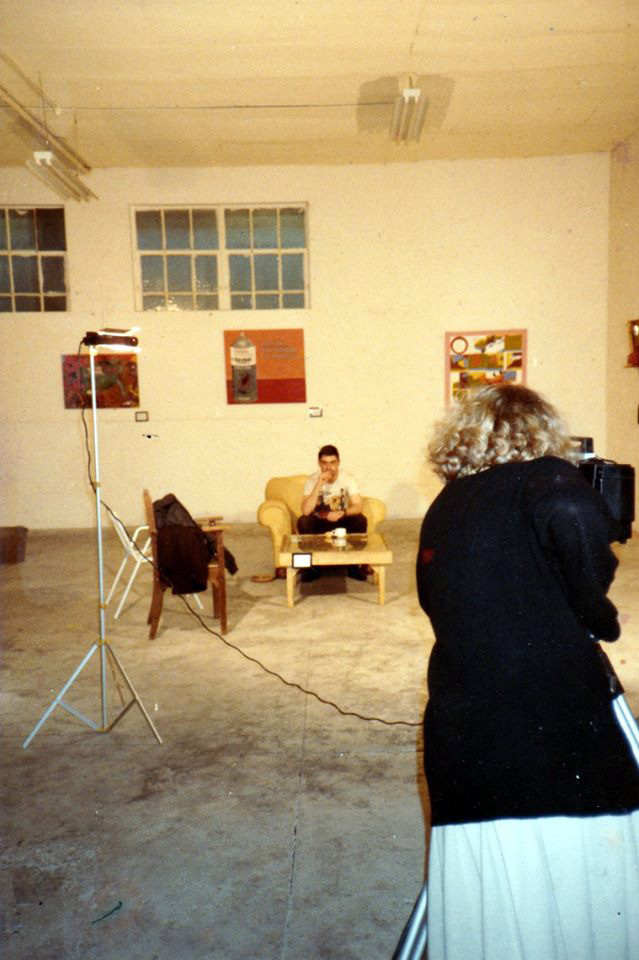
Shane Kneipp, That Space, 1987
The same year Dale Chapman included me in an excellent group show he curated, Local Colour. Artists including Dale, Daryl Graham, Maria Filippow, Hollie, Jeanelle Hurst. In August of the same year I had my first solo show, also at That, Waxing Cancerous.
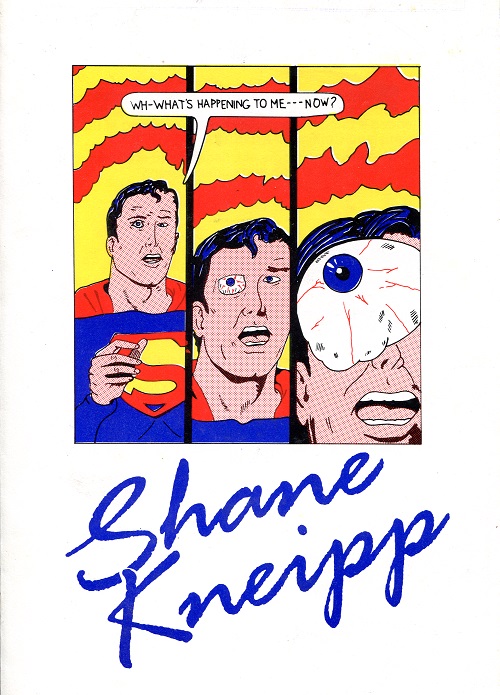
The opening was great fun. The show was officially opened by John Henderson, president of the Phantom Fan Club. Hendo did a boffo job, he showed up as Mr Walker* in hat, shades and trench coat before stripping down to the tights and mask of the Ghost Who Walks and giving a superb opening speech.
An excellent time was had by all.
It was while living at the Pink Palace that I first started working in encaustic. Prior to this I had been working on a series which I called ‘Cancer Map Sketches’. I had taken the concept of ‘Cancer Maps’ from Peter Carey’s novel Bliss and I was essentially using maps as sociopolitical metaphors. (However pretentious that might sound.) I was working as a paper laminator at the time and got to regularly see every possible kind of map and plan. This was all the way up to quite large glossy Landsat photos at a time long before Google Maps when such images were rare and extremely expensive.
The ‘Cancer Map’ paintings became increasingly more and more mixed media. I was using oil, enamel, collage, montage, acrylic applied with icing syringes and 3-dimensional objects. Another thing I was using was wax, starting with sealing wax, (which I haven’t used in decades but can still smell, I loved it) and candle wax. So I started adding pigment to candle wax and then I started using beeswax. At first I was just grinding up conté crayons, which was a tad crude, but then I got hold of some pigment powders and a great romance was born.
There was something about the nature of encaustic that seemed to naturally lend itself to pop imagery and so my work soon started taking on this nature. Classic encaustic technique involves melting beeswax and then adding pigment as well as damar as a plasticiser and hardener.
I was using the top of my gas cooker, which soon took on a rather lurid aspect. Doubtless this would have horrified a health and safety officer but it hasn’t killed me yet. It does mean though that you can’t use several of the more interesting pigments given that they contain heavy metals. My neighbours soon came to know when I was painting, due to the predominant scent of hot beeswax.
Given the ratbag nature of the Pink Palace and the fascistic nature of the body politic in Queensland at the time, the police presence there was more restrained than you might expect. There was one occasion that caused much hilarity. The filth had intended to raid Steve Stockwell’s flat. However, on ascending the stairs, instead of going left they had instead gone right, and ended up raiding the flat of Roy, the kindly, clean-living caretaker.
I was raided once while living there. I was sitting around, idly watching TV when, around 9.30, there was a knock at the front door. When I opened the door two men were standing there who were instantly and obviously identifiable as rozzers.
“Shane Kneipp?”
“Yes.”
“Police. We have reason to believe that you are both using and dealing in illicit substances.” At this point I was fairly sure that there wasn’t a crumb of anything in the joint. (While hoping there weren’t any other forgotten goodies about.) I decided that the best defence was a good offence. “Well officers”, I said, “Obviously someone has given you a bum steer. I neither use nor deal in illegal drugs. However I imagine you don’t want to simply take my word for it, so I guess you’d better come in and search the place.”
At this the cops became incredibly apologetic. “We’re really sorry, we had a complaint, so we just have to do our job.”
At that they came in and conducted a fairly desultory search, while continuing to apologise. The only time I got worried was when they came to the front bedroom. As I lived alone I basically just used the front room as a lumber room and it was pretty messy. I had two posters on the wall though, both done by my brother, Tony Kneipp. In 1982 Tony had done a single which subsequently became a Brisbane counter-culture classic, ‘Pig City’.
Both the posters had been done for the single. One showed ( pictured above) the morbidly obese Police Minister Russ Hinze threatening to demolish the suspension of the police bike he was straddling. The other showed the spectacularly criminal Police Commissioner Terry Lewis brandishing a Lewis submachine gun with a rather demonic look on his face.
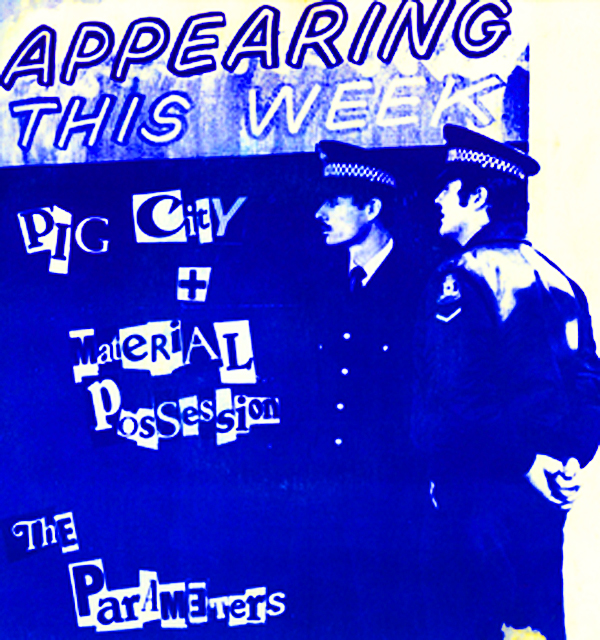
Pig City, Cover Art, Tony Kniepp
“Ah come on Shane!” said one of the cops. “Pig City. You don’t really think that do you?”
I was dumbstruck. Oh fuck, I thought. No matter what I say, I’m going to get the shit kicked out of me.
However the other cop just laughed and said, “Well, he’s not saying anything.” On that note they politely took their leave.
There was one other encounter I had there with the law.
Karl Marx once remarked that history was tragedy rewritten as farce. This was farce of the highest order.
It all happened during the 1985 SEQEB dispute, one of the major industrial disputes of the Joh years. I had been with Tony and others to a picket. It was in front of the Ekka, which would make it August.
Several friends had been arrested and folks decided to go to the city watch house to see what we could do for them. Given that my flat at the Palace was more or less on the way it was decided to stop in there for a spliff or two. (The revolution may not be televised, but a good one should be stoned.)
Having stopped off at my flat and had said spliffs, folks were in no immediate rush. Doubtless coffee was made.
I was idly hanging out in the front porch, leaning on the balustrade, when a police car pulled up. The cop in the passenger seat beckoned to me.
I walked over to him.
“Do you live here?” he asked.
“Yes”, I replied.
“What, the whole building?” he said, displaying the high intellectual callibre of the Queensland Police Force.
“No”, I patiently explained. “Just this flat.” “Oh”, said the cop and they promptly drove off.
I went back inside and told folks what had happened, at which point everyone decided that now was a good time to bugger off to the watch house.
In the meantime the two cops who had been there before had decided to come back for another go at me.
Finding me out, these masterminds then thought to question my neighbours in the next-door flat, three young women who worked at 4ZZZ Public Radio.
They wisely decided that their best approach was to bat their eyelids and play the part of sweet young things, who had always relied on the kindness of strangers.
No, they explained, they barely knew me, other than politely saying ‘Hello’ on passing. Given that one of the women in question was Cynthia Irvine, (now sadly dead), who afterwards became my long-term partner and mother of our daughter Lillian, this was something of a total porkie.
“Well”, one of the cops said, “You stay away from that Shane Kneipp. He’s a total devo!” Officially Pronounced Devo! What more could a boy want?
Cynthia loved telling that story.
As I said, my neighbours Cynthia, Julia and Claire worked at community radio station 4ZZZ where among other things they were members of the women’s collective, Megahers in 1983.
.
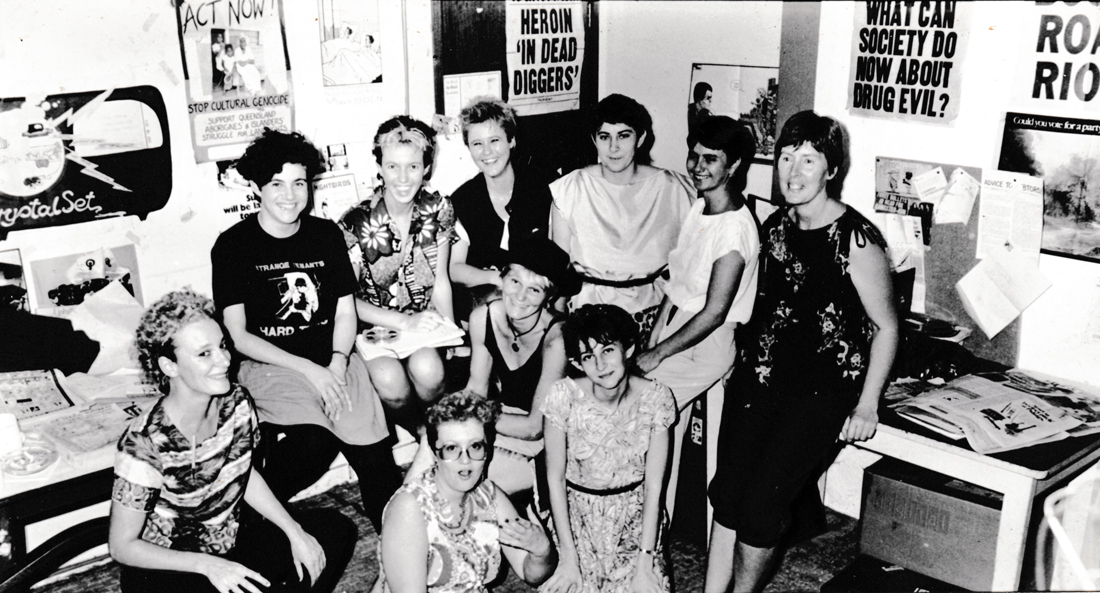
Megahers, 1984, 4ZZZ | 1984 International Women’s Day (8 March 1984)
4ZZZ was and still is a vital part of the Brisbane alternative scene.
It wasn’t just the best station on the dial, it was a major part of the opposition to the fascistic Bjelke- Petersen regime as well as providing vital services such as their accommodation notices. (Even if people were wont to joke that a lot of people seemed to want non-smoking vegetarian lesbians as housemates.)
As well, 4ZZZ organised many of the best gigs that happened in Brisbane. That was one of the jobs Cynthia did at her time at the Zed, gig organiser, where among other things she once had to deal with a spectacularly pissed Iggy Pop. Cynthia was also a gifted ceramicist.
I’m generally of the opinion that nostalgia is an emotion best avoided. (Frank Zappa once said that the world would be destroyed by either paperwork or nostalgia.)
Having said that, I have warm memories of my years at the Pink Palace and its demolition left a large sad hole in Brisbane’s ratbag history.
Postscript

Artist Paul Andrew has asked me to include a bit of a blurb about my current activity as Visual Arts Director for the Kurilpa Poetry Society.
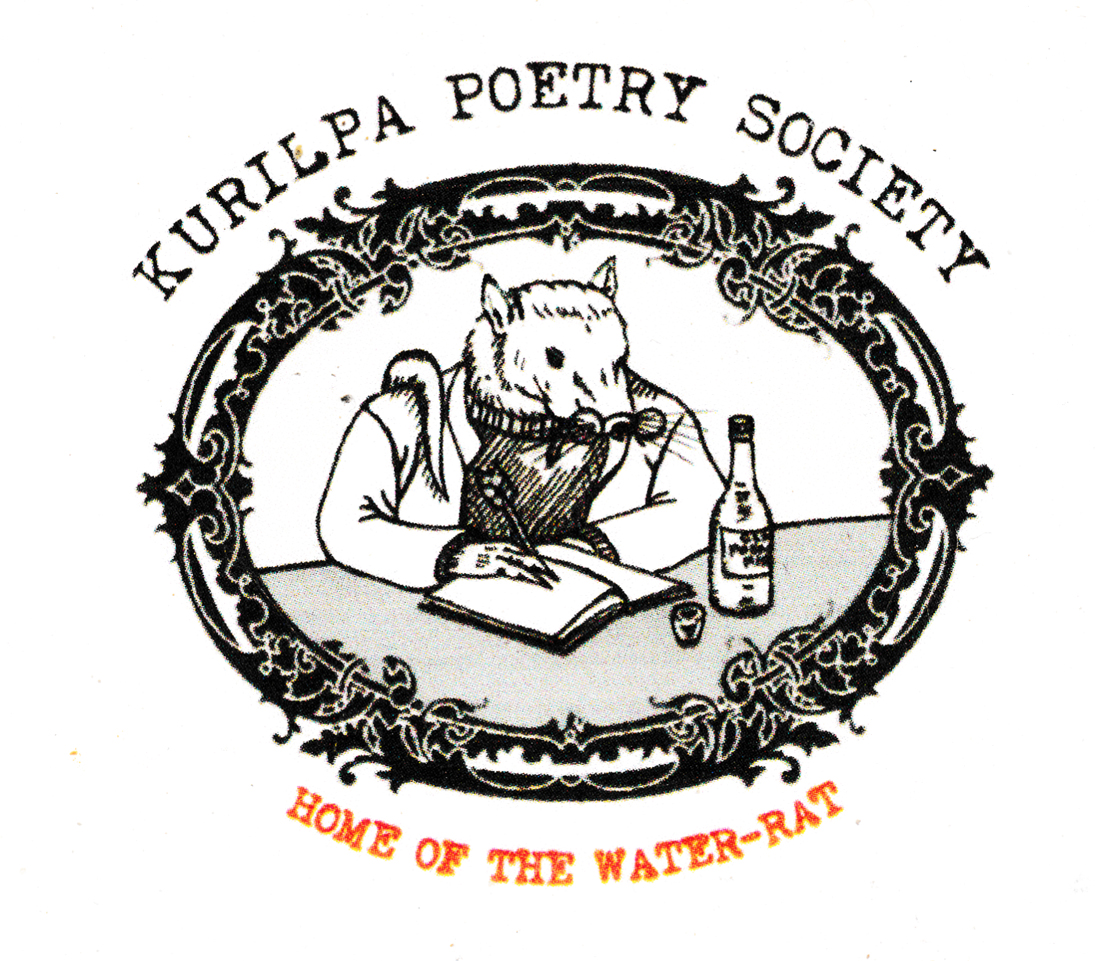
Kurilpa Poetry is a local group which meets the last Sunday of each month at the South Brisbane Croquet Club at Musgrave Park.
Kurilpa Poetry is a fun, vibrant and inclusive group.
Meetings usually include a Feature Poet, a Mystery Musician and Open Microphone sessions.
Visitors are not only welcomed but encouraged.
Entry is a low $5 and includes food and drink. (Feel free to bring a plate or bottle.)
One of my tasks as Visual Arts Director is to organise the Virtual Gallery which is essentially a slide display of whatever artist happens to take my fancy.
We are keen to show local artists, so if anyone would like their work shown, or thinks they know someone who might, feel free to contact me at shanekneipp@hotmail.com.
One of the local artists I featured about a year ago was Zeliko Maric, his work was as always, spectacular.
If you’d like to know more about Kurilpa Poets check out their blog
https://kurilpapoetry.wordpress.com

